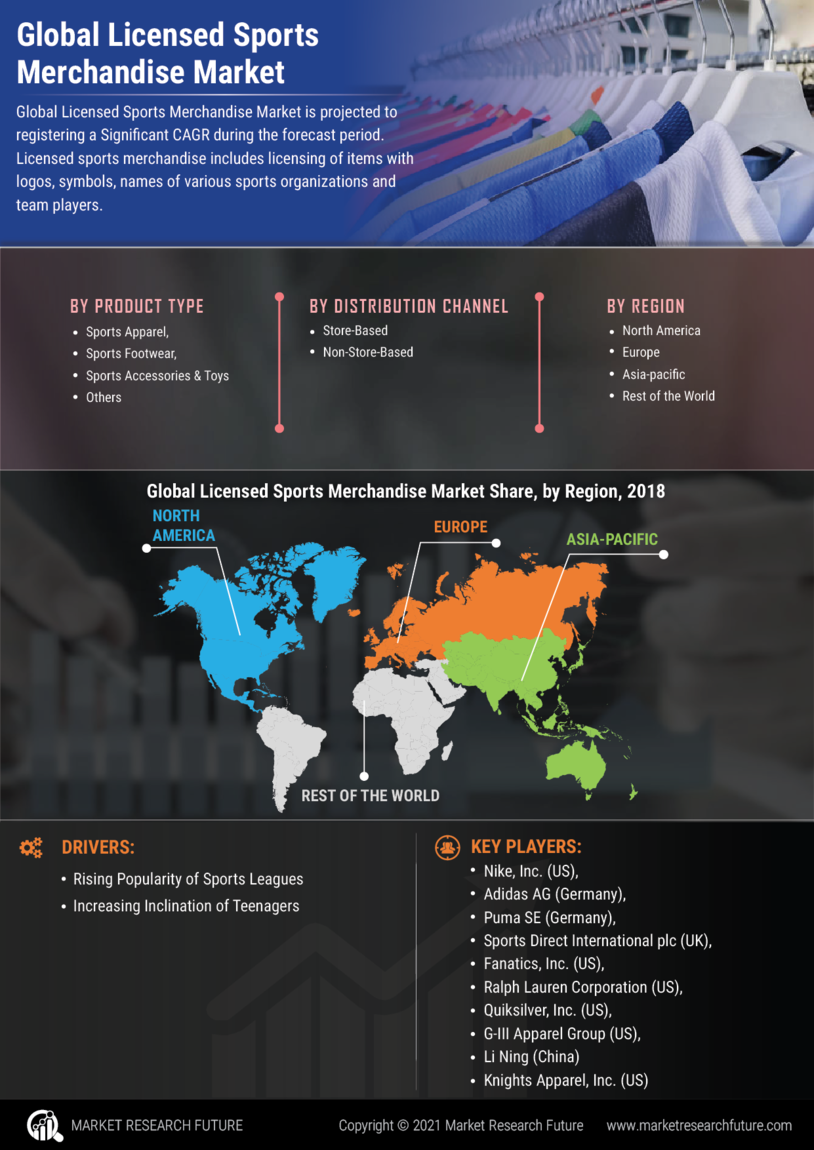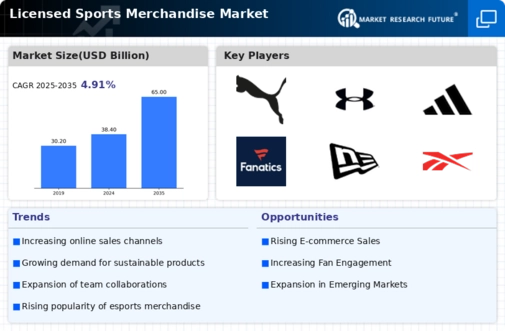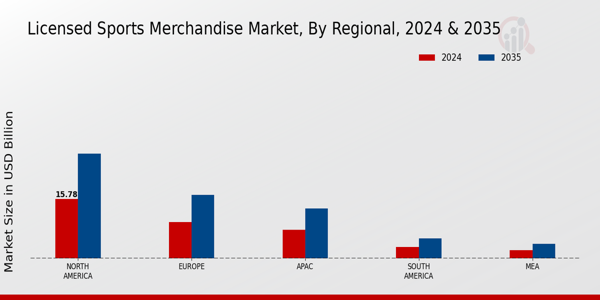Diverse Product Offerings
The Global Licensed Sports Merchandise Market Industry is characterized by a diverse range of product offerings that cater to various consumer preferences. From apparel and accessories to collectibles and home decor, the variety ensures that fans can find items that resonate with their personal tastes. This diversity is crucial in attracting a broader audience, including casual fans and dedicated supporters. Brands are increasingly innovating their product lines to include sustainable and ethically produced merchandise, which appeals to environmentally conscious consumers. Such initiatives may further enhance market growth as the industry adapts to evolving consumer expectations.
Market Growth Projections
The Global Licensed Sports Merchandise Market Industry is poised for substantial growth, with projections indicating a market size of 65 USD Billion by 2035. This growth trajectory reflects a compound annual growth rate (CAGR) of 4.91% from 2025 to 2035, suggesting a steady increase in consumer spending on licensed sports products. The market's expansion is likely driven by factors such as rising disposable incomes, increased fan engagement, and the ongoing globalization of sports. As the industry evolves, it may witness the emergence of new trends and innovations that further enhance its appeal to consumers.
Growing Popularity of Sports
The Global Licensed Sports Merchandise Market Industry experiences a notable surge in demand driven by the increasing popularity of various sports worldwide. Major leagues, such as the NFL, NBA, and Premier League, attract millions of fans, thereby enhancing merchandise sales. For instance, the NFL reported merchandise sales exceeding 1.5 billion USD in recent years. This growing fan engagement is likely to propel the market, as fans seek to express their allegiance through licensed products. As of 2024, the market is valued at approximately 38.4 USD Billion, indicating a robust consumer interest that is expected to continue into the future.
Impact of Major Sporting Events
Major sporting events, such as the Olympics and World Cup, significantly influence the Global Licensed Sports Merchandise Market Industry by creating spikes in consumer demand. These events generate heightened interest in sports and associated merchandise, as fans seek to commemorate their favorite teams and athletes. For instance, merchandise sales during the FIFA World Cup often reach unprecedented levels, with billions in revenue generated. The anticipation surrounding these events can lead to increased sales in the lead-up and during the events themselves. As such, the market is likely to see fluctuations in demand correlated with the sporting calendar.
Expansion of E-commerce Platforms
The rise of e-commerce platforms significantly impacts the Global Licensed Sports Merchandise Market Industry by providing consumers with convenient access to a wide range of products. Online retailers, such as Amazon and specialized sports merchandise websites, facilitate global reach, allowing fans to purchase items from anywhere. This trend is particularly relevant as younger demographics increasingly prefer online shopping. The convenience and variety offered by e-commerce are likely to drive market growth, with projections indicating a market size of 65 USD Billion by 2035. This shift towards digital retail channels may reshape how licensed sports merchandise is marketed and sold.
Increased Investment in Sports Marketing
The Global Licensed Sports Merchandise Market Industry benefits from heightened investment in sports marketing by brands and sponsors. Companies are increasingly recognizing the value of associating their products with popular sports teams and athletes, leading to collaborative merchandise initiatives. For example, partnerships between sports franchises and global brands have resulted in exclusive product lines that resonate with fans. This strategic marketing approach not only enhances brand visibility but also drives merchandise sales. The anticipated CAGR of 4.91% from 2025 to 2035 suggests that this trend will continue to foster growth in the licensed sports merchandise sector.












